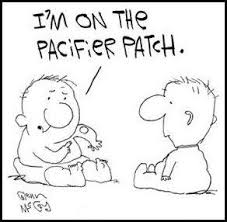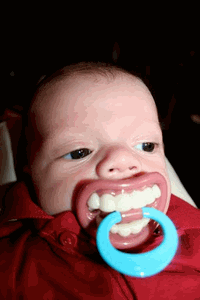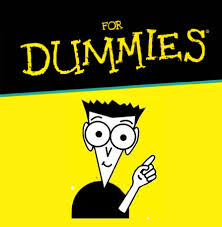Breastfeeding and pacifiers: for breastfeeding families, the decisions how, when or if to use a pacifier can be a bit muddled by cultural mores that are often at odds with the nursing habits of human infants and the physiology of establishing and maintaining a milk supply. Pacifiers, “pacis” or “dummies” are fairly de rigueur pieces of parenting equipment here in the States. A simple search on Amazon.com for baby pacifiers yields 4,788 buying options! Clearly there is no shortage of choices about “what kind” of pacifier one can use with a fussy infant. Families utilizing our consultation services often ask about pacifier use pros and cons. They want to know how to manage pacifier use in a way that won’t conflict or undermine their breastfeeding goals. We’ve compiled our thoughts on the matter from our perspective as lactation experts.
The Pros of Pacifiers
The ubiquity of pacifiers can suggest to new parents that this is a necessary tool for the proverbial parenting tool box. While not necessary—the breast is the original pacifier after all–there are tempting reasons to consider utilizing a pacifier…
- They do work as a temporary measure to calm a fussy infant during periods of time when offering the breast is neither possible nor practical. For example, during the car ride to the well-baby checkup at the pediatrician’s office, when mom is taking shower, during that all important photo shoot with Aunt Martha visiting from Wichita, etc…
- The AAP policy statement on safe sleep practices recommends considering the use of a pacifier during nap and bed time as a means to reduce infant sleep-related deaths. Included in these recommendations are breastfeeding, supine-positioning, routine immunization, avoidance of soft bedding and overheating.
- The AAP asserts that “Pacifiers do not cause any medical or psychological problems.”

- They come in all kinds of fashionable colors complete with bling or mustaches to complete your baby’s ensemble…

- A pacifier can provide a temporary respite for a mom who may otherwise feel overwhelmed and considering premature weaning from the breast. A mom with a high need infant may become “touched out” and need a break. In this case, a pacifier may actually serve to protect the breastfeeding relationship.
- Pacifier use during tube-feeds with preemies is linked to improved weight gain. The sucking releases digestive hormones that allow the baby to absorb more nutrients than if the feed were not accompanied by suckling. However, suckling at a softened breast is preferable to a pacifier.
So that’s the up side. Now for some serious concerns…
The Cons of Pacifiers
- Early use of a pacifier may result in baby gaining slowly and could potentially have a negative impact on a mother’s ability to establish a full milk supply. For this reason, consider avoiding any and all pacifier use during the first 3 weeks of life for a healthy, full-term infant. We’d like to see all suckling needs to happen at the breast if possible as a means of establishing and protecting mother’s milk supply. Data show that 140 minutes of active suckling at the breast per 24 hours is required to establish a full milk supply. If suckling is happening elsewhere, for example with a pacifier, the breast may not be receiving adequate stimulation during the critical phase of lactation when supply is under endocrine control.
- If your goal is exclusive breastfeeding for as long as possible, use of a pacifier may undermine your efforts. Be aware that pacifier use is linked in some studies to shorter durations of exclusive breastfeeding (Howard et al. Pediatrics Vol. 111 No.3, March 1 2003). A 1997 Victoria et al. study went so far as to say “Pacifiers may be an effective weaning mechanism.” And that “they are an effective mechanism used by mothers to get infants off the breast or increase the interval between feeds.” Over time, the effects of habitual pacifier use can lead to diminished supply and early cessation of exclusive breastfeeding.
- Use of artificial nipples is associated with increased rates of ear infections.

- Parents who rely on pacifiers to calm their babies are less apt to interact with their babies and learn fewer soothing techniques. In other words, the more you rely on an artificial nipple to soothe your baby, the more apt you are to feel as though you need to use a pacifier to settle baby. Babies love touch, song, motion. Mix it up and consider using pacifiers only when truly necessary.
- 2-Piece Pacifiers are dangerous and choking hazards. Use only single piece construction and never tie a pacifier to your child’s hand, neck or crib. Think about searching the Consumer Product Safety Commission’s online database for recalls prior to purchase. You can find the database at saferproducts.gov
Pacifiers aren’t inherently evil but caution is necessary to avoid becoming overly dependent on this parenting tool. Mindful, occasional use can be beneficial and helpful even for families that are exclusively breastfeeding.


